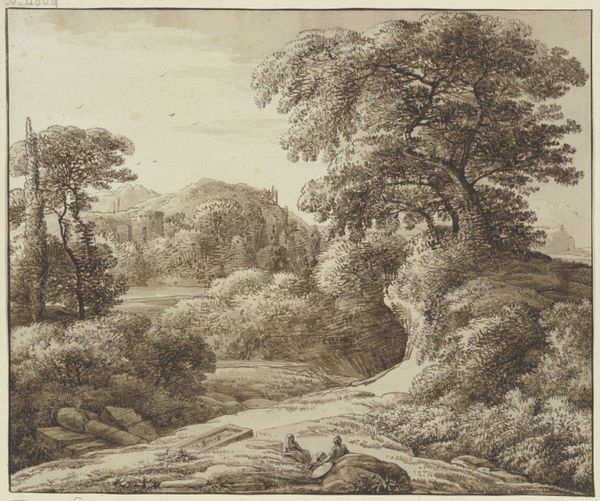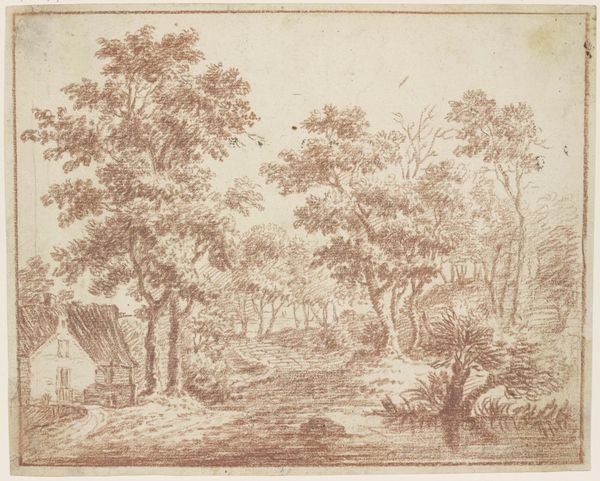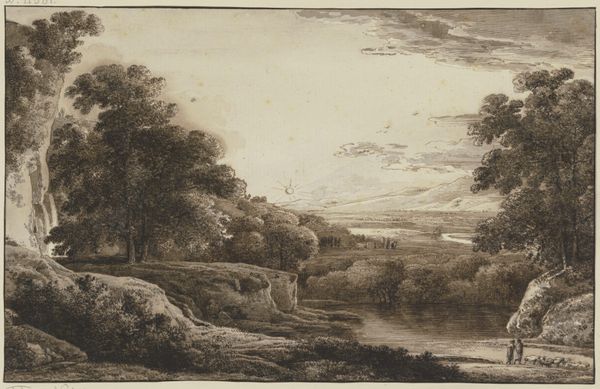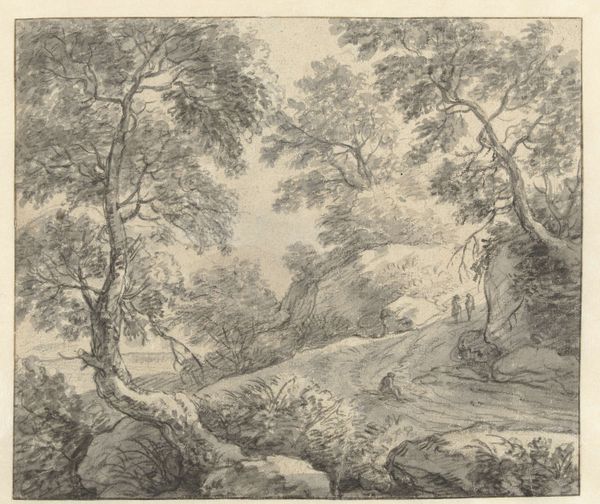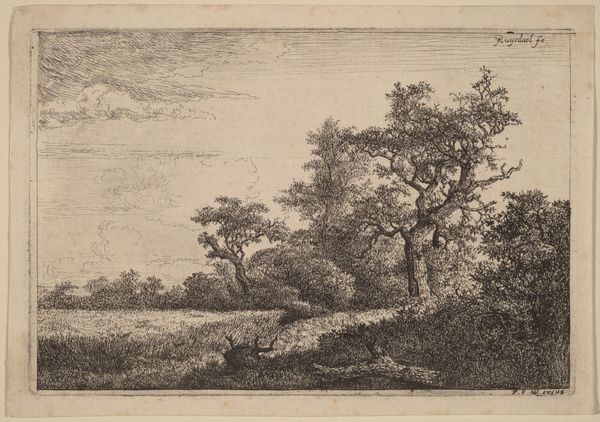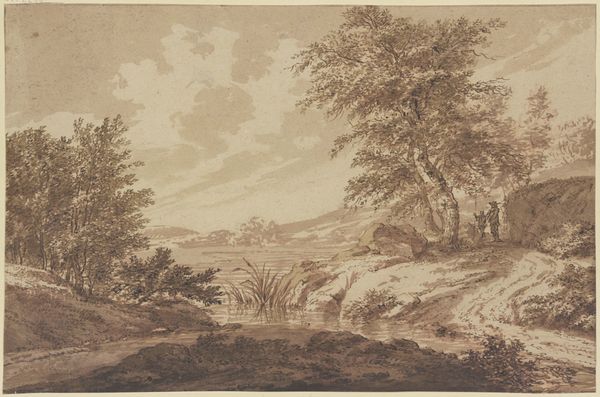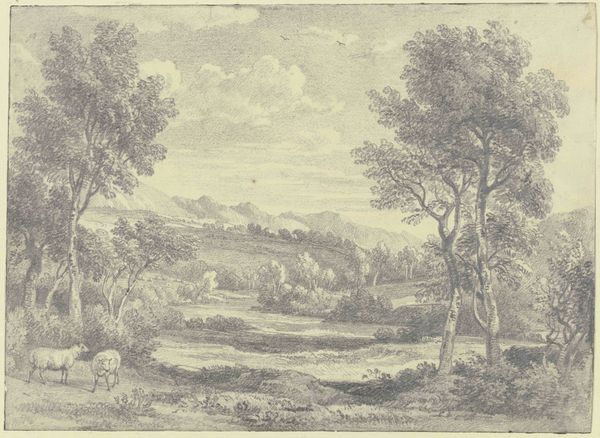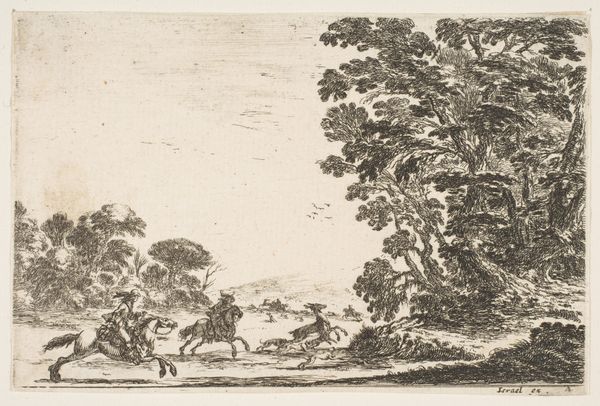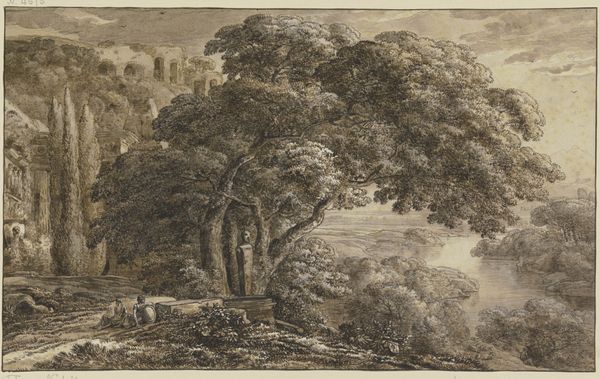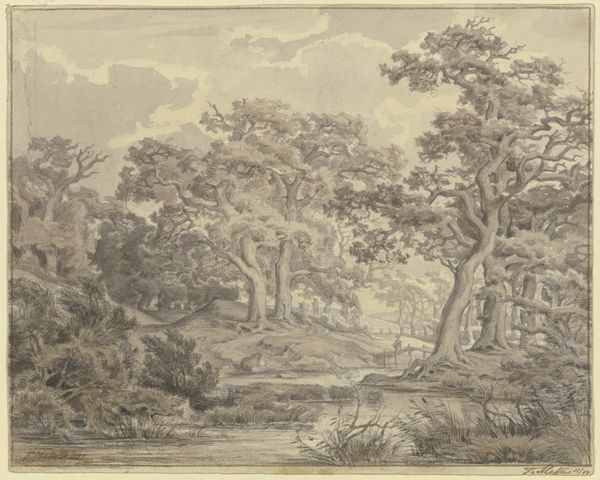
drawing, ink, graphite
#
drawing
#
landscape
#
ink
#
folk-art
#
romanticism
#
graphite
#
realism
Copyright: Public Domain
Curator: I find myself drawn into this landscape, suffused with a longing for a simpler time, before our discontents. Editor: Exactly! It's got that lovely hazy melancholia of Romanticism down pat, doesn’t it? A bit wistful, maybe? Curator: Yes, definitely. The Städel Museum holds this pen, graphite and ink drawing, a work entitled 'Bergige Landschaft, rechts eine Burgruine' or ‘Mountainous Landscape with a Ruined Castle on the Right’ in English, attributed to Franz Kobell. What strikes me most are the recurring symbols of transience. Editor: Transience is spot-on. Those delicate ink lines make everything feel a bit fragile. It's like you could blow on it, and the whole scene might dissolve like a dream. Even that distant ruined castle— it speaks of histories forgotten. Curator: The ruin represents a tangible link to a lost age, resonating profoundly with folk art traditions, almost invoking our collective cultural memory. Notice, too, how nature dominates, framing these diminutive figures in the foreground, perhaps on their own pilgrimage to the ruins themselves, and back towards cultural and self discovery. Editor: I love that read! And did the artist use, like, five lines for each little person? So tiny! Makes you think about your place in, well, everything. Sort of puts your worries into perspective, you know? Curator: Indeed! The smallness of figures emphasizes our relative insignificance in face of both time, nature and the collective memory they signify. I’m also reminded how the aesthetic category of the sublime in 18th and early 19th century thought emphasizes precisely that sensation, offering that frisson of both terror, and almost erotic fascination, with natural vastness. Editor: Ooh, naughty sublime! I see it, totally. Like that mix of excitement and fear you get standing at the edge of a really high cliff? I get it from the way the sunlight cuts across the water, that sharp contrast— lovely. The piece seems to whisper about things beyond ourselves. Curator: Ultimately, it is about invoking something much grander beyond the figures present, a deeper cultural history through symbols carefully presented in dialogue with one another. Editor: I will not be forgetting that ruined castle anytime soon, in my own mental landscape now, perhaps... Thanks for pulling me into the landscape, too! Curator: My pleasure! Hopefully many will now carry similar visions within.
Comments
No comments
Be the first to comment and join the conversation on the ultimate creative platform.
